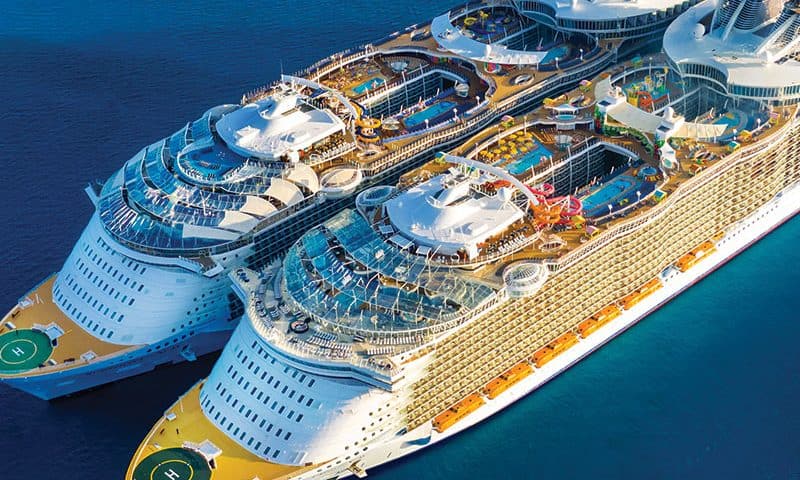Cruise operator to report Q2 results before Wednesday’s open, with net losses expected to once again exceed $1 billion, but to narrow from last year
Shares of Royal Caribbean Group slumped toward a sixth-straight loss, as investors braced for the cruise operator’s second-quarter results, which are expected to show another large loss, but less than what it lost last year.
Investor concerns over the results and outlook, as reflected in the stock’s recent performance, comes at a time when new COVID-19 cases are surging, as the delta variant of the coronavirus spreads rapidly, especially in regions with the lowest vaccination rates, including Florida, where many Royal cruises originate. Read the Coronavirus Update column.
Royal’s results will also be revealed a little more than a month after fellow cruiser Carnival Corp. CCL reported a wider-than-expected fiscal second-quarter loss and revenue that fell well short of forecasts, and two days before Norwegian Cruise Line Holdings Ltd. NCLH reveals its results.
Royal’s stock RCL slumped 3.3% in afternoon trading, and has dropped 9.7% over the past six sessions. The stock was headed for the second six-day losing streak in the past month, the other being the six-day stretch ended July 19 in which it tumbled 15.6%.
The stock has now dropped 17.0% over the past three months, but has outperformed its peers during that time, as Carnival shares have fallen 24.4% and Norwegian’s stock has shed 26.9%. In comparison, the S&P 500 index SPX has gained 5.3% the past three months.
The FactSet consensus is for a second-quarter net loss of $1.08 billion, which would mark the fifth-straight quarter of losses that topped the billion-dollar threshold. The adjusted per-share loss is expected to be $4.35 for the second quarter, compared with a loss of $6.13 in the same period a year ago and a loss of $4.44 in the sequential first quarter.
Revenue is projected to be $152.4 million, down from last year’s $175.6 million but nearly triple the previous quarter’s $42.0 million.
The company has beat per-share loss expectations the past two quarters, after missing expectations the previous three quarters, while revenue missed that past three quarters.
Occupancy is forecast to decline from last year’s 84.5%, but rise from the first-quarter’s 37.7%, to 48.8%, according to FactSet.
In its first-quarter report, Royal said booking activity for the second half of 2021 is “aligned” with the anticipated resumption of cruising, while pricing on those bookings is higher than 2019, before the pandemic. Meanwhile, advance bookings for the first half of 2022 are “within historical ranges” and a higher prices than 2019.
Analyst Patrick Scholes at Truist Securities was optimistic on the outlook for the cruise industry, saying his demand outlook, coupled with the recent weakness in stock prices, made him “not as negative” as he was several months ago.
“From our conversations with executives at large travel agencies that specialize in cruises and from examining ‘big data’ on future bookings and pricing, our latest ‘checks’ again show very strong pent-up demand for sailings, especially with luxury cruises and 2022 European and Alaskan itineraries,” Scholes wrote in a recent note to clients.
He reiterated the hold rating he’s had on Royal’s stock since July 2020, and kept his stock price target at $72, which is about 1.4% below current levels.
Scholes reminded investors that the industry’s recovery could “easily be derailed by one sizable outbreak onboard a ship,” which he said was “not a high probability but not a zero probability.” Therefore, he applauds the cruise companies for their safety protocols.

